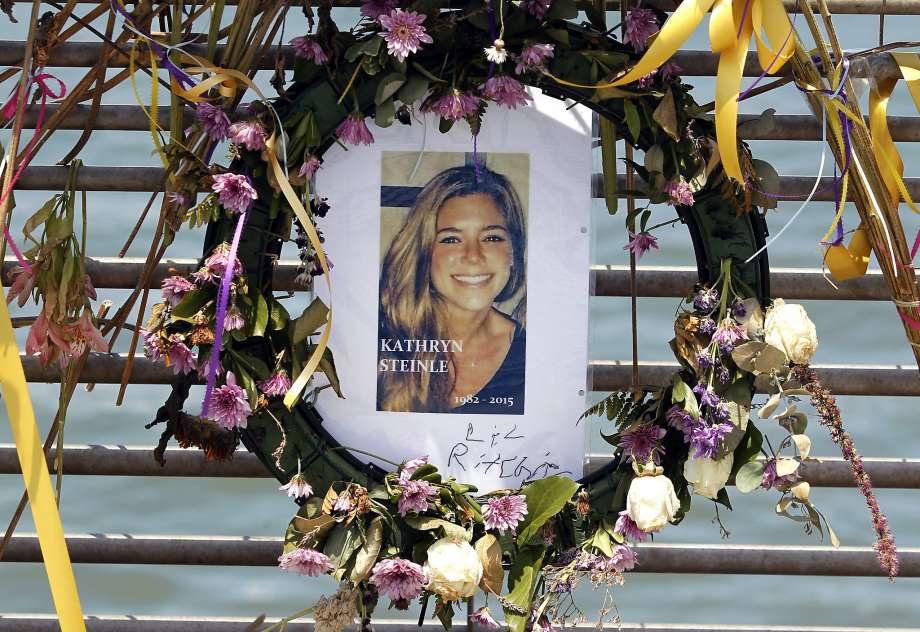PROSECUTORIAL OVERREACH?
 Monday, December 4, 2017 at 1:32PM
Monday, December 4, 2017 at 1:32PM 
A lot can be said about the Kate Steinle death and the outcome of the trial of the man who killed her, Jose Ines Garcia Zarate, the Mexican citizen deported from the United States five times. Clearly, the man was guilty and the jury got it wrong, right? Actually, the answer is never that simple.
When it comes to presumptions, there are two courts involved. One is the court of public opinion and the other is the kind that takes place inside the confines of a courtroom. The latter is the only one that matters. Having been a part of two major murder trials – Casey Anthony and George Zimmerman – I clearly understand both types of trials and the only court that matters.
First, I want to make it clear that Zarate’s illegal status was not a factor in the death. If anything, blame the city and state for their sanctuary policies, if so inclined, but not the court or jury. Blame the way the federal government and ICE work. Argue all you want. I see things pragmatically.
His prior felony convictions weren’t relevant, either, because none were acts of violence. (If I had three robbery convictions and accidentally killed a pedestrian with my vehicle while drunk, would those convictions matter?) Also, consider Casey Anthony’s prior record. She had NONE until way after little Caylee went missing. The jury was aware of his convictions, though, but was prevented from bringing up any politics related to immigration and gun control during the proceedings.
In the case of Ms. Anthony, the public was solidly behind a murder conviction from Day 1, yet she was found not guilty by a jury of her peers. With George Zimmerman, the public was split into many factions – whites against blacks, African-Americans against whites (just to be politically correct,) liberals against conservatives, and gun rights that centered around the interpretation of the Second Amendment. Zimmerman was also found not guilty and all that mattered was what went on in the respective courtrooms. Between both trials, I’m certain that I wrote several million words. I tried to explain courtroom drama, decorum, motions, rebuttals, and the interpretation of case law into layman’s terms that made things less complicated to grasp. Everything I wrote was open to discussion (of which there was plenty) and, to many people, justice was not served in either case because the juries came back with those verdicts. What about the Zarate trial? Did the jury get it right or wrong?
The first thing you might be inclined to think is that it was a stereotypical California jury, filled with “gentle people with flowers in their hair,” especially “for those who come to San Fransisco,” only it couldn’t be further from the truth. Juries are never predictable. Nothing in a trial ever is except the charge(s) filed against the Defendant that are laid out for everyone to read.
For a moment, let’s go back to the capital murder charge against Casey, which meant she faced the death penalty. While the State argued its case, many legal experts questioned how and why the bar was set so high when so many particulars weren’t established. There was no absolute date of death, for instance, no cause of death, which was mostly based on circumstantial evidence, and no solid motive. Casey was, by all accounts, a loving, doting mother until, BAM! She popped a cork and Caylee was dead. Even the police admitted it. Without going into the details further, I fervently believe a lesser charge would have rendered a guilty verdict of some kind; second-degree murder, manslaughter or, marginally, an aggravated child abuse conviction. The bar is set way high when it’s a death penalty qualified jury.
And so it was in the Garcia Zarate trial; the Prosecution aimed for the sky. While not a death penalty case, he was charged with first-degree murder. The jury was given the option of convicting him of that, second-degree murder, or involuntary manslaughter. Jurors said no to all three.
Zarate claimed he found the gun in a bag under a park bench at Pier 14. Grainy video showed several people hovering tightly together before he entered the scene and sat down. He claimed he picked the gun up from under the bench and it accidentally fired three times before tossing it into the bay, where it was recovered by a diver the next day. Whether his account was true or not, it established reasonable doubt. Apparently, the gun had a hair trigger, too, in single-action mode. Was it set in single-action mode at the time of the shooting? Who knows.
The bullet that struck Steinle skipped off the conrete floor of the pier before striking her in the back, penetrating her aorta. That showed it was not murder of any kind and why the Prosecution focused on it is beyond me. Could the jury have returned with a guilty of involuntary manslaughter verdict? That’s a good question.
In the California penal code, manslaughter is the unlawful killing of a human being without malice. Involuntary manslaughter means “in the commission of an unlawful act, not amounting to a felony; or in the commission of a lawful act which might produce death, in an unlawful manner, or without due caution and circumspection.”
What I don’t understand is that Zarate was a convicted felon in possession of a firearm. That made it a felony the moment he picked the gun up. That meant it produced a death in an unlawful, without due caution and circumspection, manner. Except for one minor detail the defense was able to cast doubt upon. The gun was wrapped in a cloth. Did this second-grade level person even know he had a gun? Well, the jury did convict him of possessing a firearm by a felon. Go figure. It means he did know he had a gun. Therefore, it should have been an involuntary manslaughter conviction. Except that, sometimes, when prosecutors aim so high a jury focuses on murder charges, they pay less attention to a lesser that lies beneath. Good criminal defense attorneys know how to take advantage of that.












 LEGAL NOTICE
©David B. Knechel. All Rights Reserved. No portion of this site can be reproduced in it's entirety or in part without expressed written permission by the owner/administrator of this site in accordance with the Digital Millennium Copyright Act. Section 512(c)(3) of the U.S. Copyright Act, 17 U.S.C. §512(c)(3). The charges against defendants are mere accusations and the subjects are presumed innocent until found guilty in a court of law.
LEGAL NOTICE
©David B. Knechel. All Rights Reserved. No portion of this site can be reproduced in it's entirety or in part without expressed written permission by the owner/administrator of this site in accordance with the Digital Millennium Copyright Act. Section 512(c)(3) of the U.S. Copyright Act, 17 U.S.C. §512(c)(3). The charges against defendants are mere accusations and the subjects are presumed innocent until found guilty in a court of law.